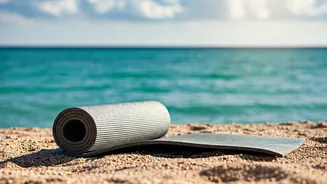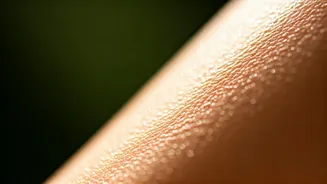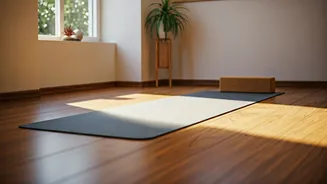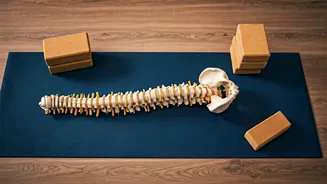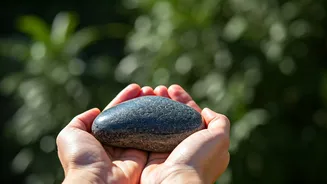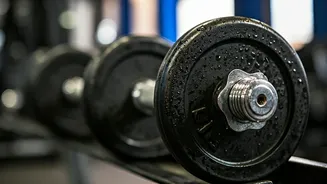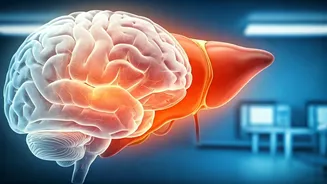Bhujangasana Unveiled
Bhujangasana, commonly known as the Cobra Pose, is a gentle backbend. To perform Bhujangasana, one must lie prone on the floor, placing the palms under
the shoulders. The elbows should be tucked in close to the body. Using the strength of the back muscles, one must lift the chest off the floor, keeping the pubic bone grounded. This pose stretches the spine, strengthens back muscles, and stimulates abdominal organs. It can help alleviate stress and fatigue while also improving flexibility in the back. Bhujangasana encourages deep breathing, which further enhances its rejuvenating effects. Regular practice can combat poor posture and promote a sense of vitality.
Matsyasana's Fish Pose
Matsyasana, or the Fish Pose, is another beneficial posture. To assume this pose, one must lie on their back and prepare to arch the back. Support the body with the elbows, lift the chest, and gently drop the head back. The crown of the head can touch the floor, creating a gentle stretch in the neck and throat. This pose counteracts the effects of sitting for prolonged periods and stretches the anterior muscles. Matsyasana is known for stimulating the thyroid and parathyroid glands, which are crucial for metabolism and overall health. It also enhances respiratory function and can alleviate respiratory ailments. The Fish Pose promotes a feeling of openness in the chest, encouraging deeper breathing and reducing anxiety.
Sarvangasana's Shoulder Stand
Sarvangasana, the Shoulder Stand, is considered the 'mother of all poses' in yoga. To execute this pose, one must lie on their back, then lift the legs and hips, supporting the body with the arms and shoulders. The body should form a straight line from the shoulders to the toes. This posture improves blood circulation, particularly to the brain, which enhances cognitive function. It can aid in regulating the thyroid gland and improving digestion. Sarvangasana is beneficial for various systems of the body, including the respiratory, nervous, and reproductive systems. Regular practice can promote calmness and improve sleep quality, contributing to a youthful appearance and enhanced well-being.
Adho Mukha Svanasana
Adho Mukha Svanasana, or Downward-Facing Dog, is a foundational yoga pose that inverts the body. Begin on your hands and knees, then lift the hips toward the ceiling, forming an inverted 'V' shape. The hands should be shoulder-width apart, and the feet hip-width apart. This pose strengthens the entire body, especially the arms, legs, and core. It stretches the hamstrings, calves, and shoulders, improving flexibility. Adho Mukha Svanasana enhances circulation and calms the brain, reducing stress and fatigue. It can also aid in relieving headaches and promoting relaxation. The inverted position promotes lymphatic drainage, detoxifying the body and rejuvenating its cells.
Vajrasana's Thunderbolt Pose
Vajrasana, also known as the Thunderbolt Pose, is a simple seated posture. To perform Vajrasana, one must kneel on the floor, with the knees together and sit back on the heels. The back should be straight, and the hands can rest on the thighs. This pose is especially beneficial for digestion and can be performed after meals. Vajrasana aids in improving blood circulation to the lower abdomen, promoting healthy digestion. It also helps to strengthen the leg muscles and improve posture. The pose can relieve constipation and gas, enhancing the overall digestive process. Regular practice can contribute to a sense of groundedness and mental clarity.
Tadasana: Mountain Pose
Tadasana, or the Mountain Pose, is the foundation for all standing yoga poses. To assume Tadasana, one must stand tall with the feet together or slightly apart, the arms relaxed at the sides, and the spine straight. Engage the core muscles, and focus on the breath. This pose improves posture, grounding the body and promoting stability. It also cultivates a sense of awareness and presence. Tadasana helps to reduce stress and anxiety by encouraging a sense of calm. The posture aligns the body, creating balance and energy flow. Regular practice can enhance physical and mental well-being, contributing to a balanced lifestyle.


